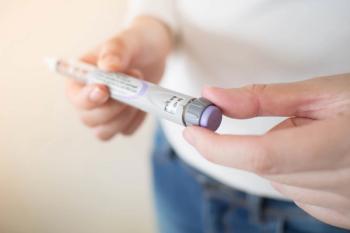
Methadone Dispensing at Discharge Can Help Shorten Hospital Stays for Patients with OUD
A posted presented at ASHP 2024 examined if improved access to methadone could decrease hospital length of stay and readmission rates.
Dispensing methadone to patients with opioid use disorder for the treatment of acute opioid withdrawal symptoms can help support discharge from the hospital and shorten the length of stay, according to research presented at the ASHP Pharmacy Futures 2024 conference, held June 8 to 12 in Portland, Oregon.1
In 2022, the Drug Enforcement Administration implemented several initiatives that aimed to expand access to medication-assisted treatments for patients with substance use disorder. One of those initiatives included allowing health care providers in hospitals, clinics and emergency departments the ability to dispense a 3-day supply of medication-assisted treatments to patients experiencing opioid withdrawal symptoms.2
READ MORE:
After the initiative was launched, investigators from the Johns Hopkins Hospital implemented a new workflow at 2 academic medical centers that allowed for the dispensing of methadone from inpatient pharmacies upon a patient’s discharge from the emergency department or an inpatient admission. The researchers then conducted a study to examine if the improved access to methadone would decrease hospital length of stay and readmission rates.
The new workflow involved a primary team placing an initial request for methadone, designated approvers approving or denying the request, and an inpatient pharmacy preparing and labeling methadone doses for outpatient dispensing. The workflow relied heavily on interprofessional collaboration between all of the health care team members to work efficiently.
The multi-site, single center, retrospective post-implementation study included adult patients who were hospitalized or seen in an emergency department between November 2022 and December 2023. Those patients were compared to a pre-implementation cohort of hospitalized patients who received methadone for opioid use disorder from July 2021 to June 2022. The study cohort included a total of 254 patients. Data on demographics, substance use history, methadone supply request and approval, and methadone dispensing was gathered via electronic health records.
Investigators found that, during the study period, 86% of methadone for home requests were approved and a total of 394 doses were dispensed. A majority of the requests—equaling 349 doses—were dispensed for inpatients, which accounted for an estimated 349 saved hospital days. Of those, 62% were for patients being discharged to home and 12% for those being discharged to a skilled nursing facility.
Additionally, the workflow was seen to be utilized most to help patients when coordination with opioid treatment programs was difficult over weekends and holidays, as 43% of requests were placed on a Friday.
“Methadone dispensing at discharge is a new workflow that was previously not allowable by the DEA,” the authors concluded. “It is uniquely innovative in supporting the discharge of patients with opioid use disorder that are otherwise medically cleared and awaiting opioid treatment program appointments. The workflow was expanded to also include discharge to a skilled nursing facility, which can significantly impact hospital length of stay. Lastly, clinical pharmacy specialists supporting the addiction medicine consult service and the emergency department provided most of the approvals after being added as designated approvers.”
Pharmacy practice is always changing. Stay ahead of the curve: Sign up for our
References
1. Berger O, Bowman L, Nesbit S, et al. Evaluating a new workflow: dispensing methadone for opioid use disorder at discharge. Presented at ASHP Pharmacy Futures 2024; June 8-12, 2024; Portland, OR.
2. DEA’s Commitment to Expanding Access to Medication-Assisted Treatment. News Release. DEA. March 23, 2022. Accessed June 18, 2024. https://www.dea.gov/press-releases/2022/03/23/deas-commitment-expanding-access-medication-assisted-treatment
Newsletter
Pharmacy practice is always changing. Stay ahead of the curve with the Drug Topics newsletter and get the latest drug information, industry trends, and patient care tips.
























































































































